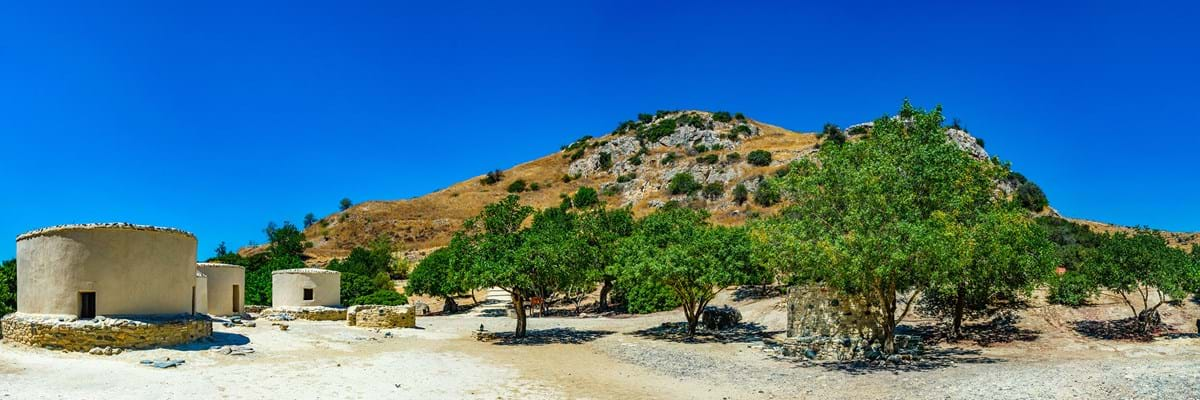Archaeologists still have a big question to answer about what happened in a Neolithic village near Larnaca in Cyprus thousands of years ago.
OK, so it isn’t Stonehenge. But the stone circles, walls and pathways in a river valley near the village of Choirokoitia, between Limassol and Larnaca in Cyprus, provide a rare peep into the prehistoric past.
The ruins are probably the remains of the first village ever built on the island, possibly dating back 7,000 years. But, so far, the archaeologists haven’t come up with an answer to a big question about those ancient people: why did they suddenly disappear?
What was one of the earliest example of mankind living in a successful community has been recognised as a world heritage site by Unesco, the United Nations Educational, Scientific and Cultural Organisation. It says it is one of the most important prehistoric sites in the eastern Mediterranean. (Visit other Unesco sites in Europe)
Five circular buildings have been reconstructed near the site to help tell visitors the fascinating story of the long-lost village. So what was life like in those Neolithic days? Possibly better than you’d expect. This is what the archaeologists have discovered.
The village was large enough for a few hundred people. The round buildings had thick walls of stone and clay, a compressed earth floor and a hearth for cooking or heating. They were clustered around courtyards where food would have been prepared.
Bone and flint tools and pots made of hard stone were used by the ancient farmers who grew crops and fruit, kept sheep and goats and killed deer and wild pigs for food. And they made jewellery out of bright green stone.
They were a race of people who went to Cyprus from what we now call Turkey or the Middle East. They probably brought their own seeds and animals with them. The men were about 5ft 3ins tall and the women a few inches shorter.
Life was short, and both men and women died in their mid-thirties. But their homes belonged to the dead as well as the living. They were buried in pits dug in the floors.
The village, which is in a loop of what is now called Maroni River, had defensive stone walls up to about 10 ft high. A section of the wall and five of the round buildings have been reconstructed nearby.
Excavation work is still going on. So the experts may still discover why, after two or three thousand years, the people who created a village that was state-of-the-art for prehistoric times just vanished.
Date last updated:



